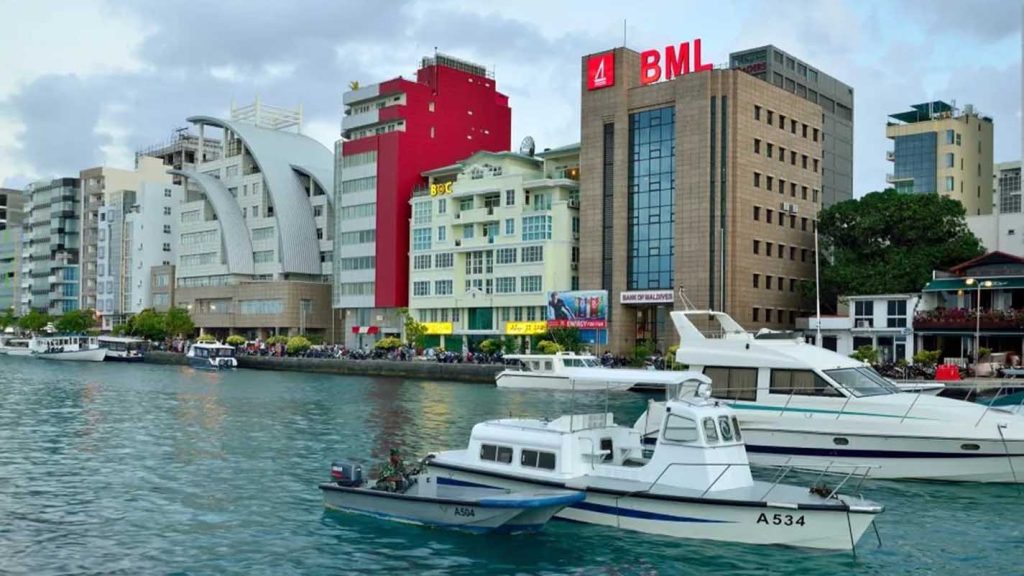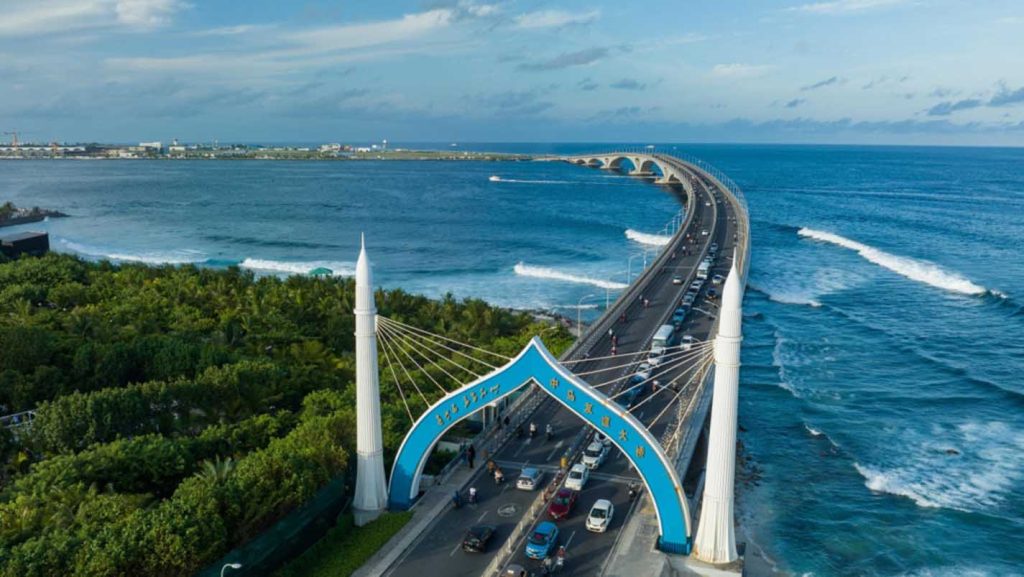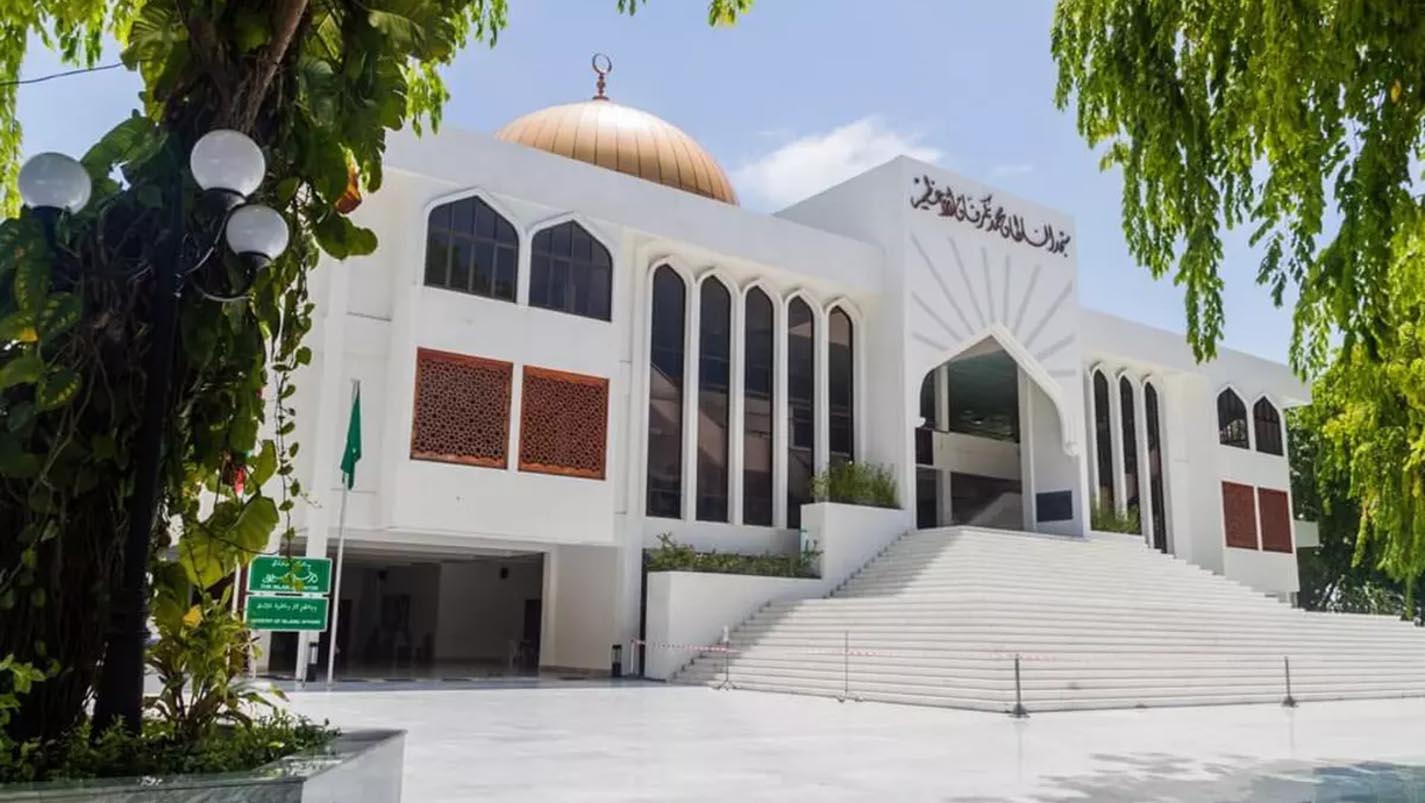When most travelers hear “Maldives,” their imagination instantly drifts to visions of powdery white beaches, crystal-clear turquoise waters, and luxurious overwater villas that seem to float effortlessly above the ocean. These postcard-perfect islands are indeed the jewels that put the Maldives on the global travel map. Yet beyond the serenity of private resorts lies a side of the country that is often overlooked but equally captivating—the vibrant capital city of Malé. Unlike the quiet seclusion of the resorts, Malé is a lively urban center where culture, history, and modern life intertwine in fascinating ways.
Walking through its bustling streets, you’ll encounter colorful buildings, the sound of motorbikes zipping past, and the call to prayer echoing from nearby mosques. It is here that you catch a glimpse of daily Maldivian life, far removed from the tourist brochures. From lively markets overflowing with fresh tuna and tropical fruits to centuries-old mosques and cultural landmarks, Malé offers a rich and authentic experience. In this guide, I’ll share the highlights of exploring Malé—from must-see attractions and local flavors to practical travel tips and hidden gems. Whether you’re stopping for a quick layover or planning a deeper dive into the city, Malé reveals a side of the Maldives few visitors take the time to discover.
Malé is compact yet energetic. With a land area of less than 10 square kilometers, it is one of the smallest capitals in the world, but don’t let its size fool you. Over 250,000 people live here, making it densely populated and vibrant. The city is a mosaic of narrow streets, colorful buildings, mosques, markets, and cafés. Life here feels a world away from the serene islands tourists usually flock to.
For many visitors, Malé is simply a transit point, but staying even briefly allows you to see the Maldives beyond its idyllic resorts. Here, you experience the rhythm of daily life, hear the call to prayer from minarets, watch locals bargain in fish markets, and taste authentic Maldivian street food.

How to Get to Malé
Almost every international visitor to the Maldives arrives at Velana International Airport (also known as Malé International Airport). Located on Hulhulé Island, the airport is just across the water from Malé. The two are connected by a bridge, so reaching the capital takes only about 10 minutes by taxi or bus.
If your journey continues to a resort, you might bypass Malé altogether via speedboat or seaplane transfer. However, setting aside time to explore the city either at the start or end of your trip can be rewarding.
Getting Around Malé
One of the joys of Malé is that it’s incredibly walkable. Most attractions, restaurants, and shops are within short walking distance. The streets are narrow, and cars are less practical than scooters and motorbikes, which dominate the roads.
Taxis are affordable for short distances, though be aware that traffic congestion can slow you down. Public buses operate, but given the small size of the city, walking remains the best option for visitors.
Key Attractions and Things to Do in Malé
1. Malé Fish Market
The Malé Fish Market is a must-visit to glimpse local life. This lively marketplace is where fishermen bring in their daily catch, often massive tuna that are sliced and sold on the spot. The experience is not only about seeing seafood but also about feeling the energy of trade, chatter, and community.
2. Local Market
Just a short walk from the fish market, the Local Market is where you’ll find stalls selling tropical fruits, vegetables, and Maldivian delicacies such as dried tuna, coconut products, and sweet snacks. Sampling these is a great way to taste everyday Maldivian flavors.
3. Hukuru Miskiy (Old Friday Mosque)
Built in the 17th century, this mosque is the oldest in Malé and a UNESCO World Heritage candidate. Constructed from coral stone and intricately carved, Hukuru Miskiy is not only a religious site but also a testament to Maldivian craftsmanship and Islamic heritage.
4. Grand Friday Mosque & Islamic Centre
The Grand Friday Mosque is the most prominent religious building in the Maldives. Its golden dome dominates the skyline of Malé. Inside, the vast prayer hall can hold thousands of worshippers. The Islamic Centre next to it also houses a library and conference hall.
5. Republic Square (Jumhooree Maidhaan)
This central square is a hub of political and cultural life. Surrounded by government buildings, it’s often busy with locals, events, and national celebrations. The Maldivian flag flying here is massive and symbolic of national pride.
6. Sultan Park & National Museum
Sultan Park offers a patch of greenery in the otherwise dense city. Within the park lies the National Museum, where artifacts ranging from royal regalia to ancient Maldivian artifacts tell the story of the nation’s history and culture.
7. Artificial Beach
While Malé itself isn’t blessed with natural beaches, the Artificial Beach is a popular spot for locals to swim, relax, and enjoy festivals or music events. Travelers can join in to experience a slice of local leisure life.
8. Sinamale Bridge
Also called the China-Maldives Friendship Bridge, this structure connects Malé with Hulhulé Island (and thus the airport). Walking or driving across it provides great views of the city and surrounding turquoise waters.

9. Villingili (Villimale) Island
Just a short ferry ride from Malé, Villingili offers a quieter and more relaxed vibe. Often considered a suburb of the capital, it’s a lovely escape if you want greenery, small beaches, and less hustle while still close to the city.
10. Local Cafés and Street Life
One of the best things to do in Malé is simply wander. Pop into small tea shops where locals sip Sai (black tea) and eat hedhikaa (savory snacks). Observe murals painted on walls, kids playing in alleyways, and vendors selling coconut water on street corners.
Food and Drink in Malé
Maldivian cuisine is a blend of South Asian, Arabic, and African influences, with fish, coconut, and rice forming the staples. In Malé, you’ll find both local eateries and international restaurants.
- Must-Try Dishes:
- Mas Huni: a breakfast dish made of tuna, onion, coconut, and chili, served with flatbread (roshi).
- Hedhikaa: small snacks such as fish cakes, pastries filled with tuna, or fried bread rolls.
- Garudiya: a fish soup eaten with rice, lime, chili, and onions.
- Cafés and Restaurants:
- Local teashops (Sai Hotaa) are perfect for an authentic experience.
- Seafood restaurants serve freshly grilled fish and curries.
- For international options, Malé offers everything from Italian to Middle Eastern cuisine.
Coffee culture is growing, and you’ll also find cozy cafés with espresso-based drinks, popular among young locals.
Where to Stay in Malé
While most tourists head to resort islands, Malé does offer accommodation options ranging from budget guesthouses to mid-range hotels. Staying in the city allows you to experience local culture up close.
- Budget: Guesthouses and smaller hotels provide simple yet comfortable lodging.
- Mid-Range: Modern hotels with amenities like Wi-Fi, air conditioning, and on-site dining are widely available.
- Nearby Alternatives: Hulhumalé, a reclaimed island adjacent to the airport, offers more spacious and beachside accommodations while still being close to Malé.
Practical Travel Tips for Malé
- Dress Modestly: The Maldives is a Muslim country, so visitors should dress conservatively in Malé. Swimwear is only acceptable at designated tourist beaches or resorts.
- Respect Religious Customs: When visiting mosques, dress appropriately (covering shoulders and knees). Women may need to wear a headscarf to enter.
- Currency: The local currency is Maldivian Rufiyaa (MVR), though US dollars are widely accepted. Small local shops may prefer MVR.
- Connectivity: Buy a local SIM card at the airport for affordable data and calls.
- Language: Dhivehi is the local language, but English is commonly spoken, especially in tourist areas.
- Safety: Malé is generally safe, though like any city, keep an eye on your belongings in crowded areas.
- Alcohol: Unlike resort islands, alcohol is not served in Malé due to religious restrictions. Resorts and liveaboards are the only places where it’s available.
Why Spend Time in Malé?
Many visitors skip Malé, heading straight to luxury resorts. But spending a day or two here adds depth to your Maldives journey. It allows you to:
- Understand local culture and daily life.
- Learn about the nation’s Islamic heritage and history.
- Taste authentic food beyond resort menus.
- Experience the energy of one of the world’s most compact yet vibrant capitals.
Malé offers a unique counterbalance to the peaceful isolation of resort islands. It shows you that the Maldives is not just about luxury and nature—it’s also about people, traditions, and stories.
Exploring Malé might surprise you. It is not the tranquil paradise of glossy brochures, but that’s precisely why it’s worth visiting. The city introduces you to the real Maldives—a nation of resilience, faith, trade, and community, living amidst the endless beauty of the Indian Ocean.
If you plan your trip to the Maldives, don’t just fly in and out of the airport. Dedicate time to wander the colorful streets, sip tea with locals, visit the markets, and stand before centuries-old mosques. Malé may be small, but it leaves a big impression.
Tags: Artificial Beach, Malé Fish Market, Republic Square
